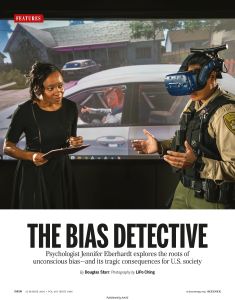
The Bias Detective
Psychologist Jennifer Eberhardt explores the roots of unconscious bias – and its tragic consequences for US society
Recommendation
The brain’s attempts to categorize and familiarize the world begins innocently in childhood. But as psychologist Jennifer Eberhardt discovered, over time such ingrained images can establish deep-rooted racial bias. From simply not being able to tell faces of other races apart, to larger issues of discrimination and police shootings, unconscious bias causes serious societal problems. Eberhardt’s intensely personal drive permeates her distinguished career, in which she proves that racial bias can be recognized and eliminated from society with data mining, specific training – and practice.
Summary
About the Author
Douglas Starr is co-director of the Boston University Science Journalism Program, and is a veteran science, environment and medical writer. His most recent book is The Killer of Little Shepherds: A True Crime Story and the Birth of Forensic Science.




















Comment on this summary